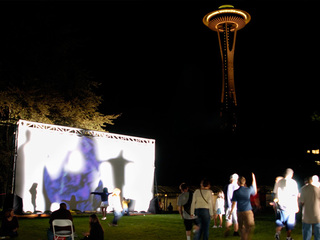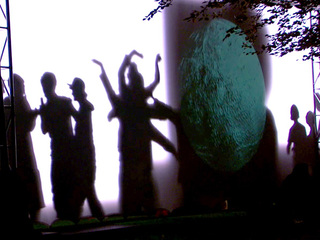Hidden Light
Scientists at NASA's Jet Propulsion Laboratory are looking to discover earth like planets around other stars. In the coming decades JPL will invent the tools to find them. This installation investigates this concept of seeing what is unseen
Seeing the Unseen
“There are many things that exist right in front of us, yet we do not have the right technologies or mindset to see them. From scientific breakthroughs to successful organizational outcomes, they can all be obscured by something else until someone finds the key to truly see. For scientists at NASA's Jet Propulsion Laboratory, they are looking to discover earth like planets around other stars. This is extremely difficult because stars are billions of times bigger and brighter than the planets they are looking for. Yet they believe they are right there. Already hundreds of planets have been found, but current technology limits us to finding only the largest of planets. In the coming decades JPL will invent the tools to find them. This installation investigates this concept of seeing what is unseen.”
From http://directedplay.com/hiddenlight.html
There are enormous challenges to finding planets in other solar systems. One of the ways in which scientists at NASA JPL approach this is to use telescope known as a chronograph. It’s basic principle is to mask the light from a star so that you can see the planets in the reflection of its light. This works much like the way we might cover the sun with our hands to allow us to see a street sign better on a bright day. This analogy is nice but these stars are extremely far away, gigantic and very bright, while the planets are in contrast small and dim. In reality the analogy is much closer to trying to see a firefly in front of a spotlight if it is in New York and you are in Los Angeles.
Exploring Science
To explore this idea, Dan Goods prepared ‘Hidden Light’ for the Jet Propulsion Laboratory. One of the first projects for them, it presents the science behind the chronograph and JPL’s search for earth-like planets through a public outdoor installation. To represent ‘star light’ an high-lumen projector presents incredibly bright content on a nearby wall. This projector is positioned about waist high and centered, while a secondary project is mounted high above at a steep angle. A second projector simulates the planetary bodies the chronograph aims to detect by projecting a movie on the same wall. This can’t be seen immediately as the brighter projector hides it. By occluding the first projector, the video is revealed in the cast shadow. The more people that get involved, the more of the video they can see.
“People look at it from a distance and they are not really sure what it is. Then they realize if they block out the bright projection they can see the dim projection within their shadow and there is more there than they thought. To me, that’s a lot of what science is about.”
- Dan Goods
Further Reading
- The Hidden Light: Seeing the unseen. Project Page -http://directedplay.com/hiddenlight.html
- The Hidden Light. Video - https://vimeo.com/49258075
- Hidden Light (original in white) - https://vimeo.com/22864872
No comments yet. Why not add the first?
Acknowledgements & Credits
Daniel Goods, NASA JPL


← Back to work
0 Comments